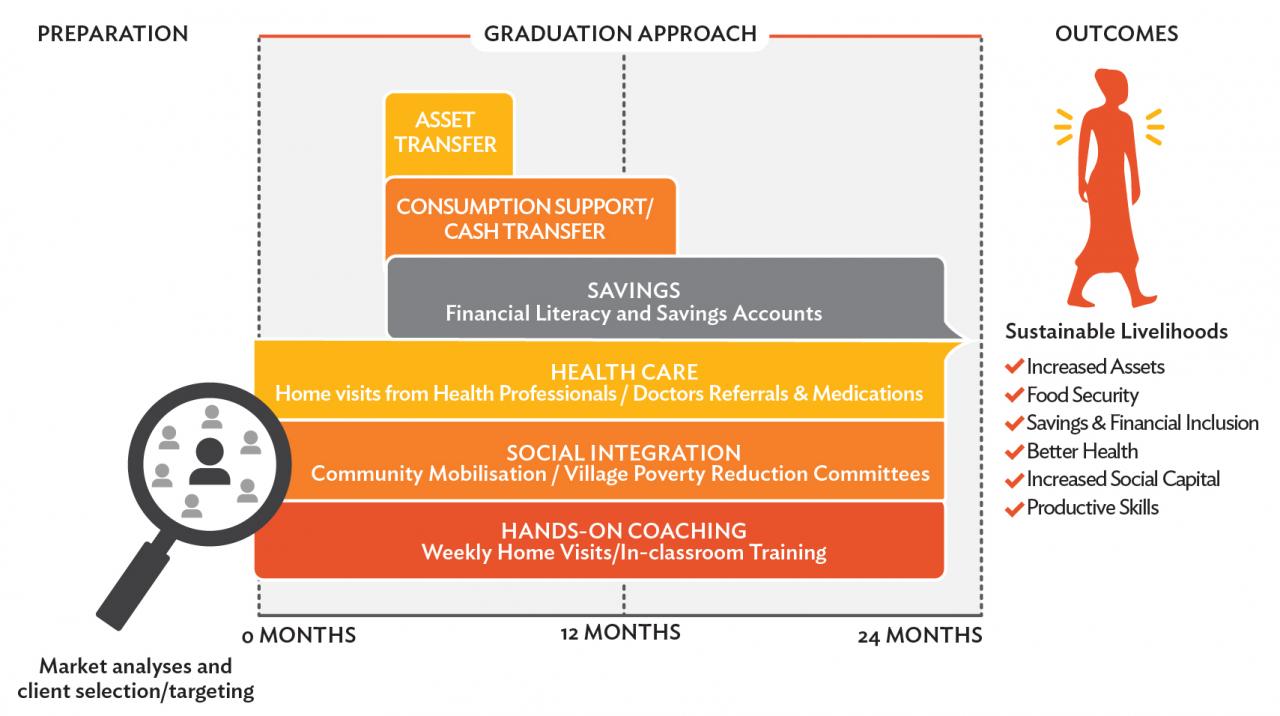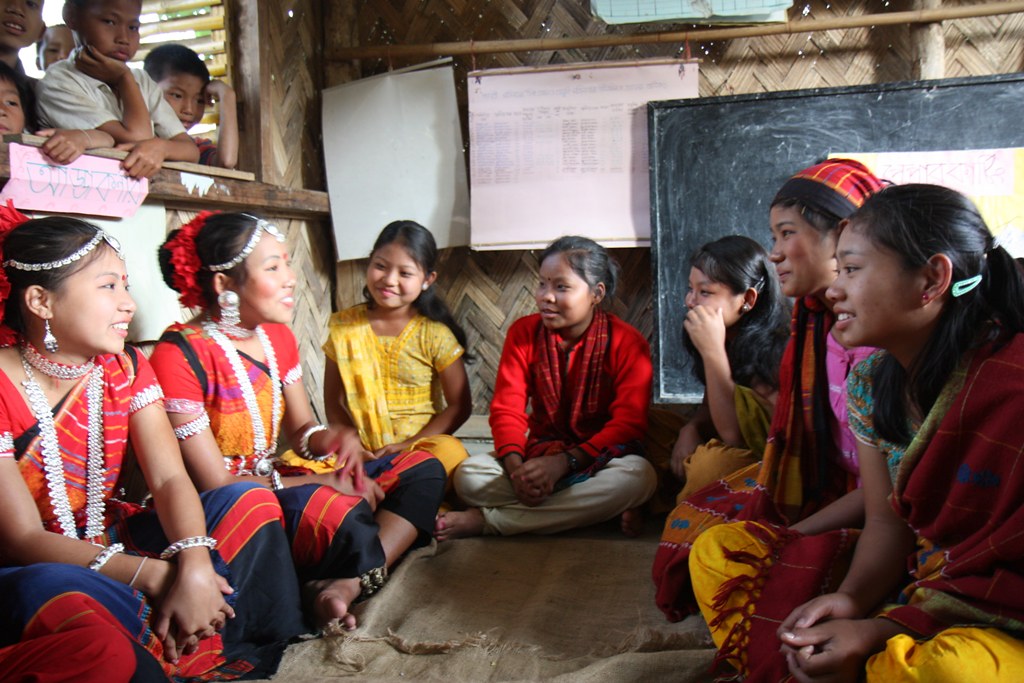
A market in Bangladesh, where the development organization BRAC pioneered the Graduation Approach. BRAC's program reached 9 million Bangladeshis from 2002 to 2021 and helped 95 percent of those people move out of extreme poverty. (Image: lau rey/Flickr)
As TriplePundit moves forward with our new editorial focus on solutions journalism, we've looked back at some of the top solutions proposed to address our most pressing environmental, social and economic challenges a decade ago. Now, we're looking ahead to learn more about the evidence-based responses that can further progress on these challenges into the future. Last week, we reviewed some of the highest-potential interventions to reduce greenhouse gas emissions and mitigate climate change — from reducing food waste to restoring tropical forests. Now, we're fixing our eyes on another persistent and pervasive challenge: global poverty.
When talking about how to address wealth and income disparities in the fight against poverty, similar interventions are often mentioned: direct cash transfers, increasing education levels among children, training farmers to produce better yields, improving healthcare services, empowering women and girls. All of these things can make a massive impact on their own. For example, empowering women and girls with social protections, family planning services, and equal pay for equal work could lift nearly 150 million people out of extreme poverty by 2030 on its own, according to estimates from U.N. Women. But what if we could bring all of these interventions together?
That's the concept behind the Graduation Approach — which the Brookings Institution, a U.S. economic think tank, called "the most widespread and well-researched version of a 'big push' poverty eradication method."
A "big push" to fight global poverty
"Big push" programs employ multiple interventions simultaneously or in sequence to address the multidimensional causes of global poverty. The Graduation model in particular was pioneered by the international development organization BRAC (then the Bangladesh Rural Advancement Committee) in 2002. It deploys evidence-based interventions at specific times to help individuals and families lift themselves from extreme poverty — defined as living on less than $US2.15 per day.
"These interventions are adapted to local requirements and generally include livelihood training, transfers of cash and productive assets, and encouragement of savings, all facilitated through in-person coaching," according to Brookings. "They focus on the needs of the household as a whole, with women usually as the primary program participants."
The long-term results impressed researchers and made the global community take notice. BRAC's Graduation program reached 9 million people in Bangladesh from 2002 to 2021 and helped 95 percent of those people move out of extreme poverty. "Based on the successes of the program, over 100 partners in nearly 50 countries have either piloted or implemented Graduation, reaching 14 million people and over 3 million total households," Brookings reported in 2021.

Understanding the global poverty problem
While wealth accumulation and access still varies widely around the world, global poverty has declined significantly since the end of the last century. Around 1.9 billion people, or 36 percent of the global population, lived in extreme poverty in 1990. By 2015, that number had fallen to 730 million, or around 9.9 percent of the world's population.
Even with backslides tied to the COVID-19 pandemic, which caused the first increase in global poverty seen in nearly two decades, the world is still making progress compared to where we came from. Last year, around 8 percent of the world's population — some 648 million people — faced extreme poverty.
While the numbers are headed in the right direction, the current state of things still leaves nearly 1 in 10 people globally subsisting on less than US$2.15 per day and struggling to meet their most basic expenses.
Beyond Bangladesh, researchers have documented compelling evidence that the Graduation model can begin to change the tide. A 2015 randomized study of 21,000 people across Ethiopia, Ghana, Honduras, India, Pakistan, and Peru showed that people had more assets and more savings 12 months after a three-year Graduation program ended. For every $1 spent on the program, participants received between $1.33 and $4.33 in benefits, depending on the country.
While the results of case studies like these are promising, how to effectively scale such programs around the world remains in question. When the Ford Foundation and the World Bank's Consultative Group to Assist the Poor (CGAP) studied 10 Graduation pilot projects in eight countries across Asia, Africa, and Latin America from 2006 to 2014, they found the results to be "extremely positive." But they hastened to note, "The very factors believed to make it so effective — highly personalized, wrap-around services delivered with compassionate, skilled and individual attention — also make the 'classic' Graduation Approach time- and labor-intensive and costly."
Still, the groups' research into programs run by both governments and non-governmental organization (NGOs) showed this roadblock is more than surmountable. "The scale-ups documented in the four case studies [in Colombia, Ethiopia, India and Peru) indicate that adaptations to suit local contexts, participant needs, and resource constraints can be managed successfully," they found.

Looking ahead to a more evidence-based approach to fighting global poverty
Economists Abhijit Banerjee and Esther Duflo won the Nobel Prize in 2019 for their emphasis on an evidence-based approach to fighting global poverty. They led the large-scale 2015 study on Graduation and followed up with another randomized controlled study published just last year.
The study found that former participants in a Graduation program in West Bengal, India, had higher incomes than the control group even a full decade later. It's often typical for the benefits of anti-poverty interventions to fade over time, so results like these put substantial evidence behind Graduation in the long-term.
It's not the only answer, of course, as other research found cash infusions alone to be just as or more effective than cash plus the other services offered through Graduation. Which approach wins out varies greatly by local context — demonstrating that although evidence and research can point us in the right direction, understanding local needs will always be imperative when tackling social challenges like poverty.
“We’re not trying to pit Graduation against anything else. Nothing we do is the one magic bullet to end poverty,” Shameran Abed, the executive director of BRAC International, told Vox last year. “But we think Graduation is extremely powerful, extremely compelling, and the evidence suggests that. So we would really like to see a much greater uptake of Graduation-type programming globally.”
BRAC provides resources and support to help other organizations and localities adopt Graduation-type programming. You can learn more here.

Mary has reported on sustainability and social impact for over a decade and now serves as executive editor of TriplePundit. She is also the general manager of TriplePundit's Brand Studio, which has worked with dozens of organizations on sustainability storytelling, and VP of content for TriplePundit's parent company 3BL.














